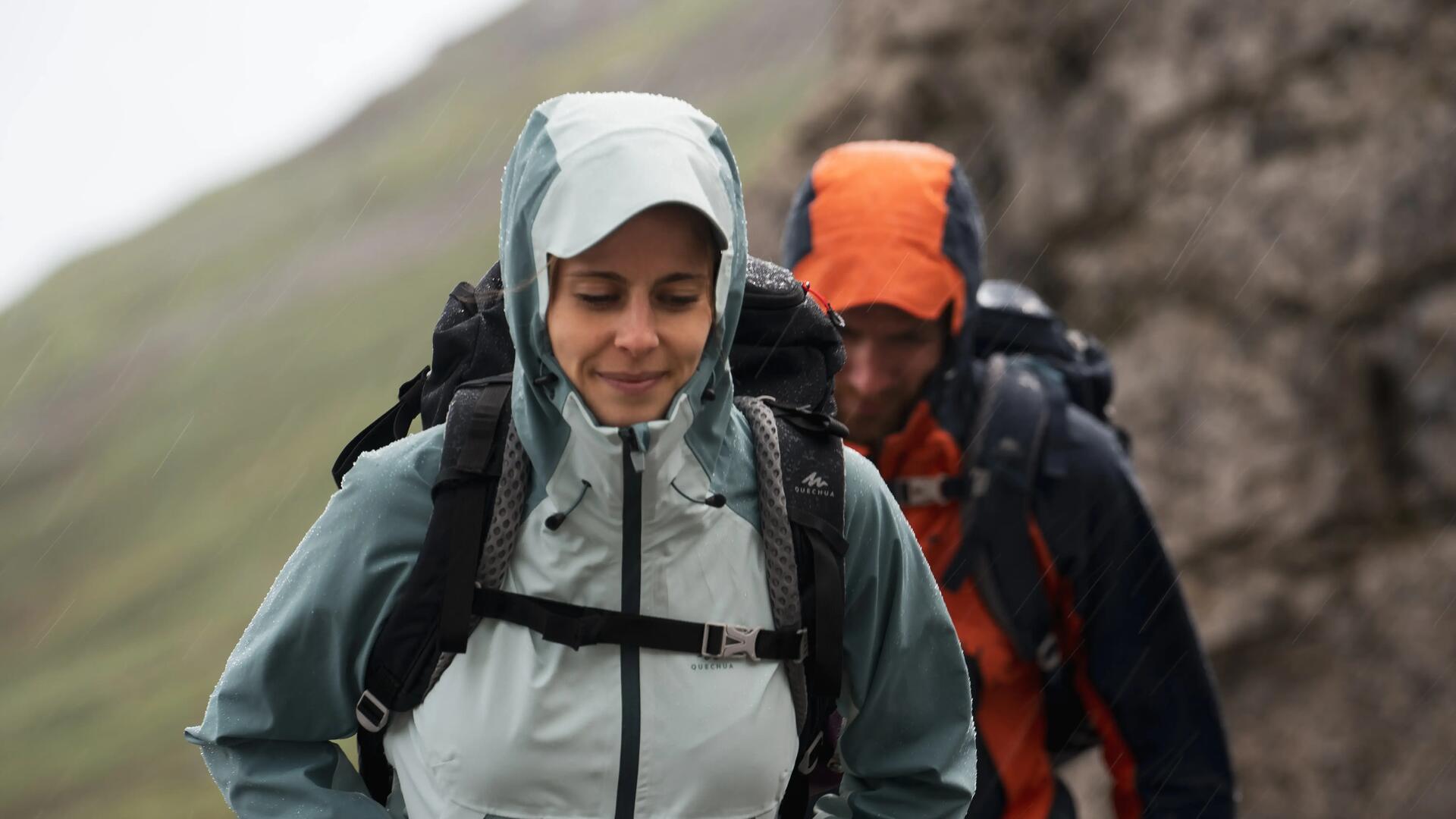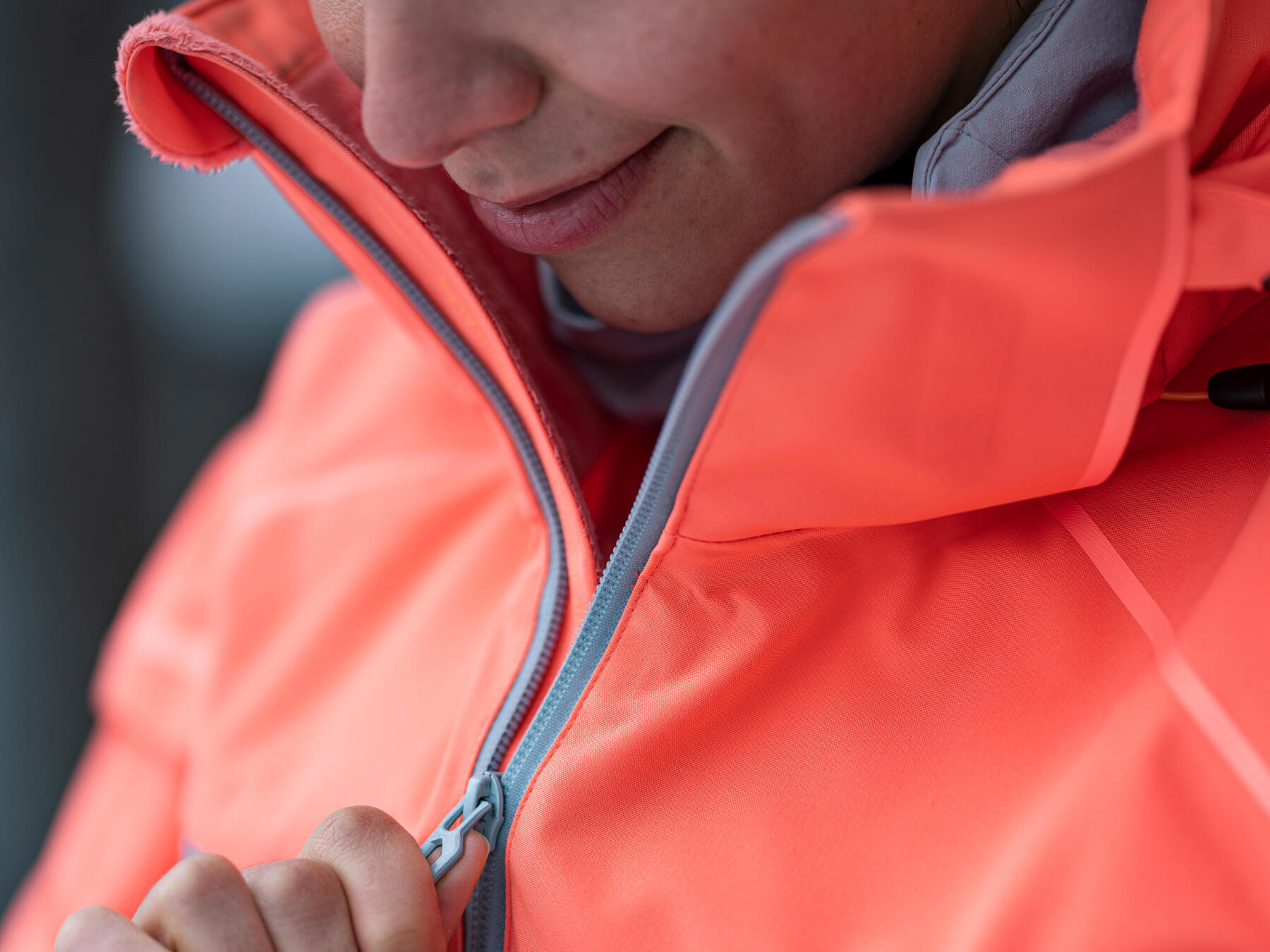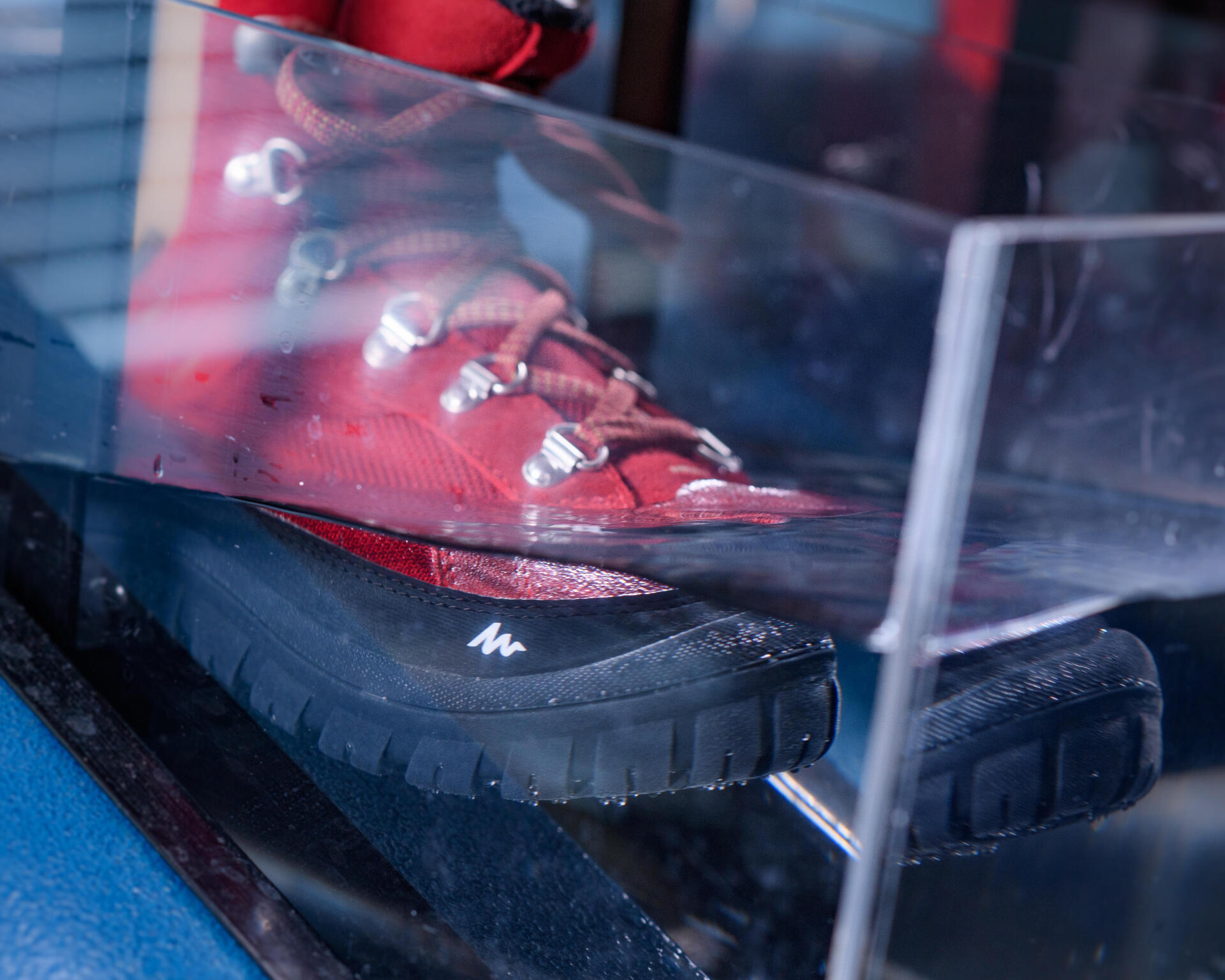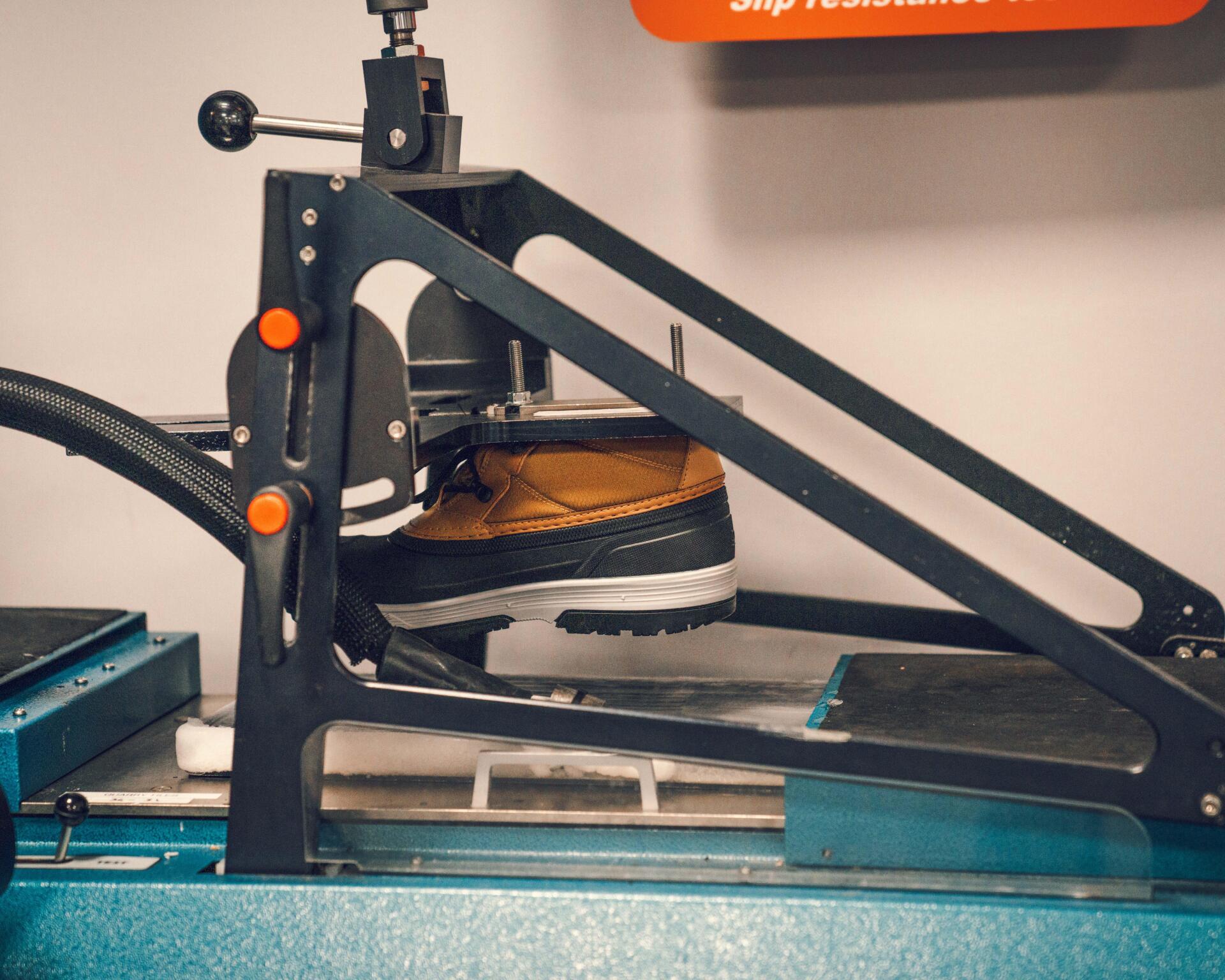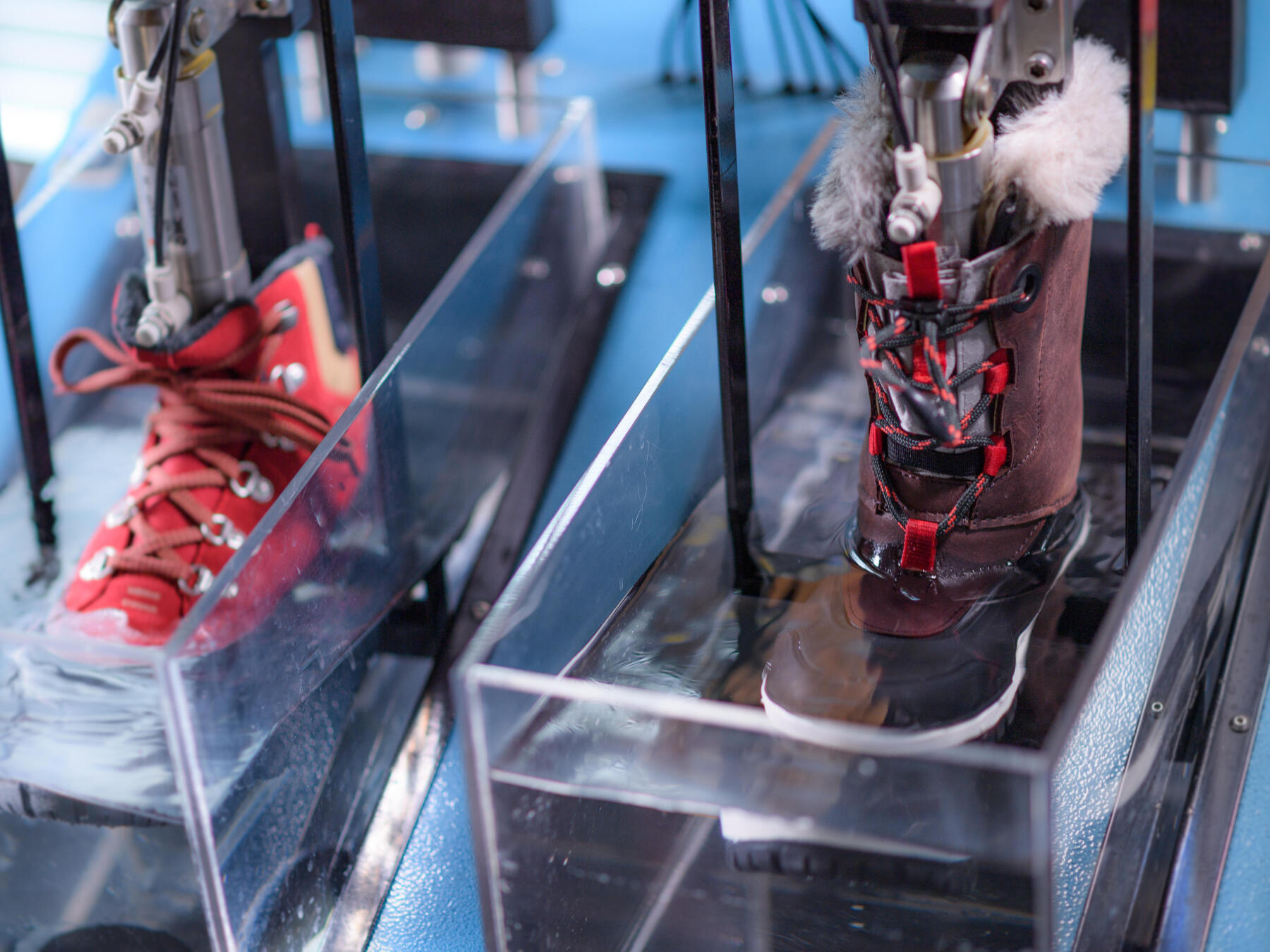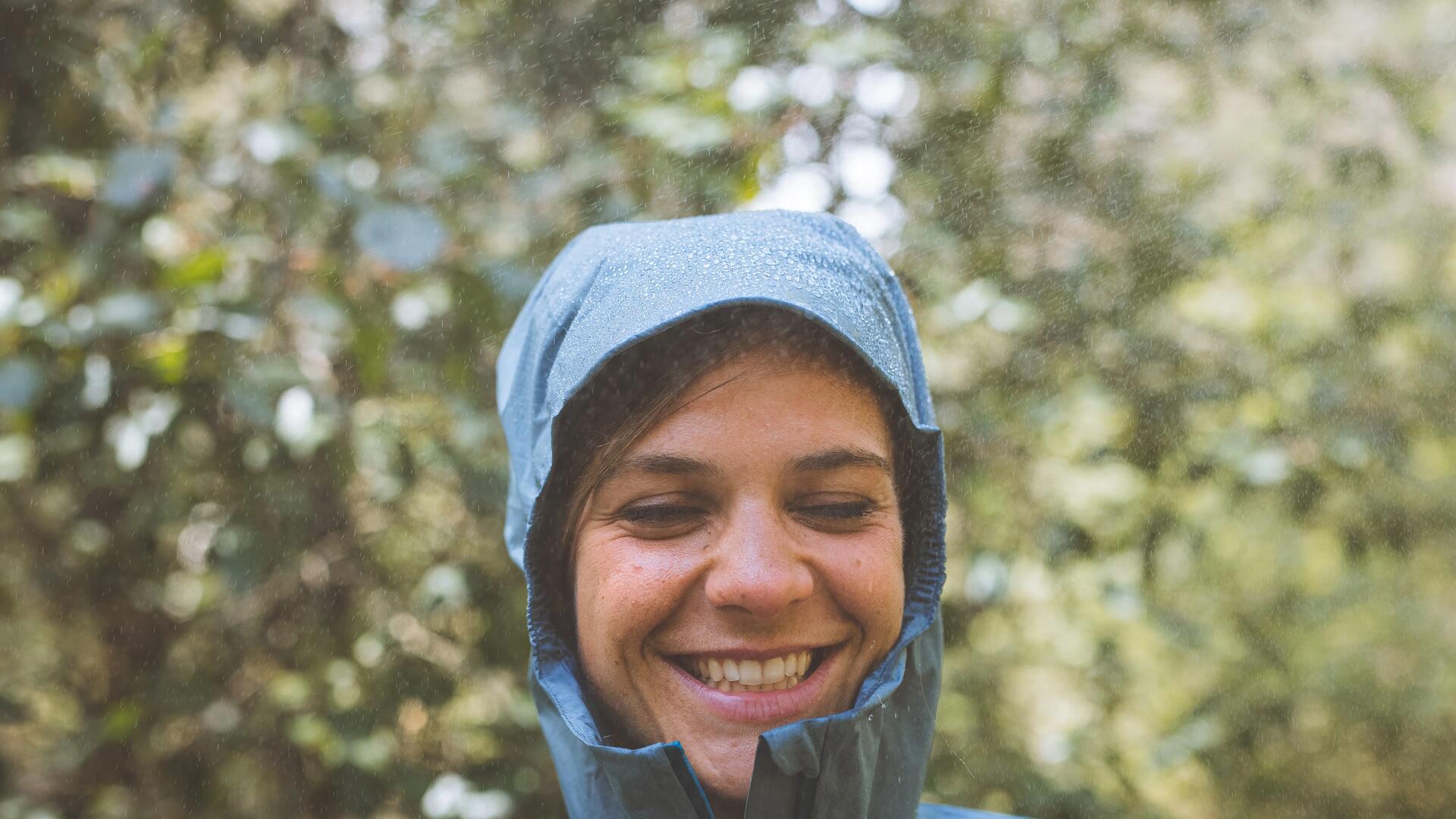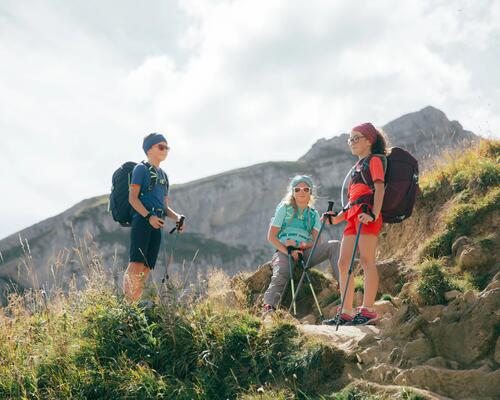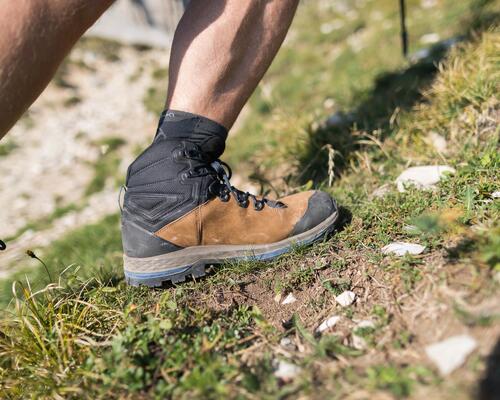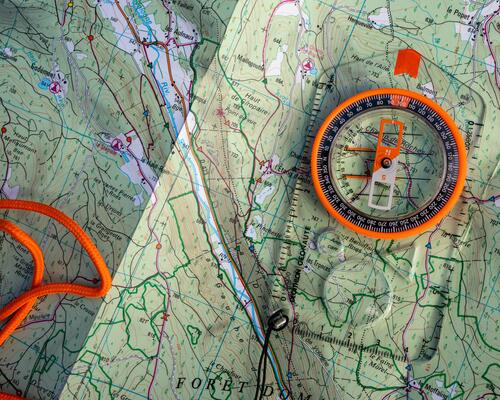Of course, we test a variety of items, but one of our most tested items are our boots. We know how important it is to keep your feet warm and dry when you’re out in the elements. We also want to ensure you have adequate grip and support regardless of the conditions you’re experiencing while you practice your sport.
Most of our boots have a waterproof membrane to provide optimal waterproofing and breathability. Boots are immersed in water with pressurized air inside to check that no bubbles form on the surface of the boot. Next, the boots are put on a mechanical foot that simulates walking while half immersed in water to ensure the inside stays dry.
During the waterproofing test, we test 5 levels of waterproofing:
- 2,000 flexes (approximately 4 km, 30 minutes of walking)
- 10,000 flexes (approximately 10 km, 3 hours of walking)
- 30,000 flexes (approximately 15 km, 6 hours of walking)
- 50,000 flexes (approximately 20 km, 8 hours of walking)
- 100,000 flexes (approximately > 20 km, 24 hours of walking)

